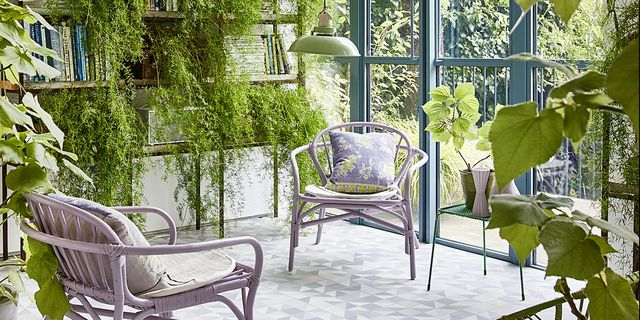The concept of well-being is traditionally associated with personal habits and lifestyle choices, such as diet, exercise, and mental health practices. However, the significance of one’s living environment in fostering overall well-being is often underestimated. The home, a central aspect of daily life, profoundly influences physical, mental, and emotional health.
This piece explores the multifaceted relationship between home improvement and well-being, highlighting how transforming living spaces can lead to a happier, healthier life.
Home Improvement: More Than Just Aesthetic Upgrades
Home improvement transcends mere visual enhancements, significantly benefiting residents’ quality of life. While the initial allure might be in beautifying the space, the true value lies in functional improvements and safety enhancements.
By optimizing the layout for better usability, updating crucial systems for safety, and implementing health-centric modifications, home improvement projects holistically elevate the living experience. This multifaceted approach transforms a house aesthetically and fosters a safer, more efficient, and comfortable environment for all who dwell within.
Decluttering: The First Step Towards a Harmonious Home
One of the initial steps in home improvement is addressing clutter. A disorganized home can lead to increased stress and anxiety, making it difficult to relax or focus. Engaging junk removal experts can be an effective strategy for tackling this issue.
Homeowners can create a more serene and productive living environment by systematically removing unnecessary items and organizing the remaining ones. This process enhances the physical space and contributes to mental clarity and emotional calmness.
The Psychological Impact of Aesthetics and Organization
The design and organization of a home deeply affect its inhabitants’ psychological well-being. Color schemes play a crucial role; for example, tranquil shades in bedrooms promote relaxation and better sleep, while vibrant tones in living areas can energize and stimulate creativity. Natural lighting is another essential element that elevates mood and enhances productivity.
Beyond aesthetics, organized and functional spaces minimize daily stress, making routine tasks more manageable. Thoughtfully designed interiors, therefore, not only please the eye but also positively impact mental and emotional health by creating a harmonious and efficient living environment.
Safety and Health Considerations in Home Improvement
Prioritizing safety and health in home improvement is crucial. This encompasses reinforcing structural integrity to ensure a safe living environment, and updating essential systems like electrical and plumbing to modern standards. Using non-toxic materials is vital in preventing health hazards, especially in spaces like kitchens and bedrooms.
Furthermore, improving ventilation and indoor air quality is essential in reducing the risk of respiratory issues and promoting a healthier home. Incorporating natural elements, such as indoor plants, can further purify air and enhance well-being, making the home a safe and nurturing space.

Energy Efficiency: A Sustainable Approach to Well-Being
Incorporating energy efficiency into home improvement is a forward-thinking approach that benefits personal well-being and the environment. For instance, utilizing energy-efficient appliances and superior insulation techniques reduces utility expenses, providing financial relief. This sustainable practice minimizes the household’s carbon footprint, contributing to environmental preservation.
Beyond ecological and economic benefits, energy-efficient homes offer enhanced comfort through better temperature regulation and reduced noise pollution. This holistic approach to home improvement demonstrates that responsible choices in energy consumption can significantly improve one’s quality of life and contribute positively to global environmental health.
The Social Aspect of Home Improvement
Home improvement significantly influences social dynamics within the household. Enhancing communal areas like living rooms or outdoor patios creates inviting spaces that foster interaction and bonding among family members and guests. Well-designed, comfortable spaces encourage gatherings, facilitating communication and relationship building, key elements of social well-being.
Tailoring these areas to accommodate activities like dining, entertainment, or relaxation can significantly enhance the quality of social interactions, making the home a hub for meaningful connections and shared experiences, thereby reinforcing the social fabric of one’s personal life.
Personalization: Expressing Identity through Home Decor
Personalizing a home through decor is a powerful means of self-expression. It allows individuals to reflect their unique identity, tastes, and life experiences in their living space. Personalization can range from selecting furniture and color schemes to displaying artwork and keepsakes, each contributing to a deeper personal connection with the space.
This expression of individuality creates a sense of belonging and comfort, vital for emotional well-being. A home that mirrors one’s personality becomes a sanctuary and a source of pride and fulfillment, enhancing the overall emotional quality of life.
Conclusion: Embracing Home Improvement as a Path to Well-Being
Home improvement is a powerful tool in the pursuit of well-being. Individuals can significantly enhance their quality of life by creating a living space that aligns with personal needs and values. From the psychological benefits of an aesthetically pleasing environment to the health advantages of a safe and functional space, the connection between home improvement and well-being is undeniable. As individuals embark on their home improvement journeys, they pave the way for a more harmonious, healthy, and fulfilling life.




